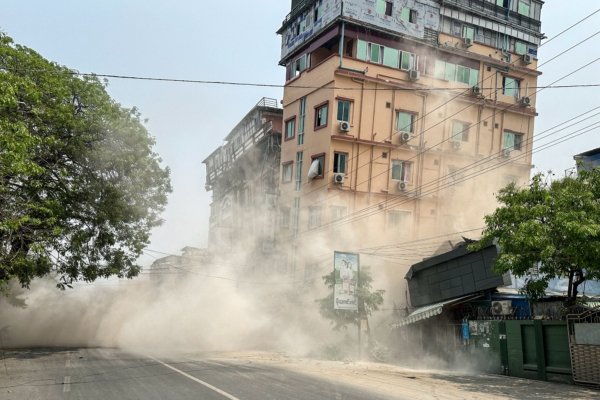On March 28th at 2:20 p.m., a strong earthquake struck Myanmar. This earthquake is the largest magnitude earthquake so far this year. Following the quake, Chinese residents in the area expressed that the situation in Mandalay is “worse than imagined,” as if the world had turned its back on them. People reported hearing cries for help from under the rubble on the streets.
According to data released by the Myanmar National Management Committee News Information Group, as of the evening of March 29th local time, the earthquake had caused 1,644 deaths, 3,408 injuries, and 139 missing persons nationwide.
The United States Geological Survey reported the earthquake as measuring 7.7 on the Richter scale. Ma Yunfeng from Sichuan, who had been conducting jade business in Mandalay’s largest jade trading market, Jade Bay Market, for just half a month, described the chaos during the earthquake. He mentioned the poor signal in the area, causing network delays on a regular basis.
When the earthquake struck, Ma was lighting a fire on the stove when he was shaken violently and struggled to maintain balance. He rushed to shut off the gas fearing an explosion while enduring the intense shaking for about 20 to 30 seconds.
The aftermath was devastating with collapsing buildings, leaning electricity poles by the roadside, shattered windows, and roofs ripped off at Jade Bay Market in Mandalay.
Communication became a challenge with phone signals cut off. They relied on indoor wireless networks to connect with the outside world. Despite facing daily water and power outages in Mandalay, they were prepared with backup power sources like batteries.
Amid the darkness after the earthquake, Ma Yunfeng conveyed the news from their location to the outside world using the remaining battery, uncertain of how long it would last. He expressed deep concern over the extent of the disaster, feeling isolated and cut off from the world, in a situation worse than expected.
The earthquake struck on March 28th, coinciding with Myanmar’s traditional holiday, the Full Moon Day of Tabaung. Ma mentioned the market’s rich mineral resources and how, despite being mainly supplied by locals, the market was often quieter during religious events like on the Full Moon Day of Tabaung.
On the morning of the 29th, Ma ventured out to assess the surrounding areas and found severe damage to many schools, grateful that it was a holiday and the students were not in class to face the consequences.
While walking the streets, he heard cries for help from under the rubble but felt helpless. The news of collapsed temples and trapped individuals spread sorrow, indicating the scale of the tragedy.
Several colleagues remained uncontactable even until the afternoon of the 29th. Ma shared a distressing account of a colleague’s friend being buried under debris, uncertain of their condition or location, though they were rescued from a collapsed hotel.
During the earthquake, a four-story building in Mandalay collapsed with high school student Yu Mi doing an exam in a tuition class on the second floor. After a terrifying half-minute, she managed to find safety under a table until the worst had passed.
Her teachers then guided them downstairs after the main tremors ceased. Trying to contact her family, Yu found the phone lines dead. Eventually, her family arrived at the school to take her home, witnessing the destruction and chaos on the way.
Returning home, they found shattered tiles, no electricity, and unstable networks. Despite frequent power cuts in Myanmar, they had prepared generators and solar panels but hesitated to stay indoors, opting to spend the night in the yard due to ongoing aftershocks.

